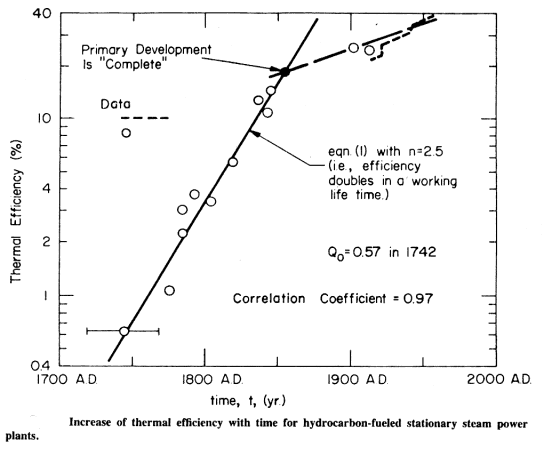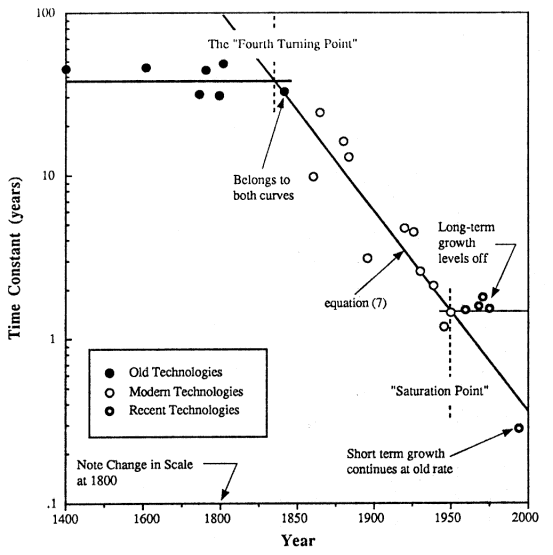Today, we improve the things we make. The University of Houston's College of Engineering presents this series about the machines that make our civilization run, and the people whose ingenuity created them.
Let me tell you about a strange human rhythm. It has to do with improving the things we make. Things like accuracy and efficiency improve exponentially in time -- as long as the only real limit to improvement is our inventive capacity.
Power-plant efficiencies are now at a point where human ingenuity can't do much more for them. Now they're up against the laws of physics. But the first engines, back in the 1700s, were far less than one percent efficient. They gave only one unit of work for every 300 units of heat in the fuel they burned.
That's far less than any physical limit. So, for over a century, steam-engine efficiencies doubled every thirty years.
You get the same story with mechanical clocks. The first ones lost or gained about a half hour a day. For the next 600 years, clock accuracies doubled every 30 years.
We've doubled the speed of cars and trains every 30 years since we built the first ones in the late 1700s. The racing cars on the Utah Salt Flats are still increasing speed at that rate.
That was true for every technology we started before 1840. An odd animal insistence runs in the way we change our machines. Of course 30 years is evocative. It's one generation. It's a typical time that any of us works directly in a field.
In 1840 the doubling rule changed. We institutionalized technology. We set up R & D labs. We created a new breed of professional engineers and scientists. When we did, everything sped up. But now it follows a new kind of 30-year doubling rule.
Thirty years after 1840, we were quadrupling quality every generation. Sixty years later, we were improving it eight-fold in 30 years. After 1840 we started doubling the exponent of improvement. Now the pace of change is absurdly fast. Today, the quality of new technologies doubles in months.
So I look at that 30-year rhythm and wonder. Somehow, it's built into our bones that something has to double every generation. It's unconscious. It's inexorable. The inventive mind seems to be animal instinct as much as volition.
Wars don't alter rates of inventive change. Economics and kingly edicts don't alter it. Those things touch production -- but never invention. Invention flows from our inner being. It is a powerful river that cannot be dammed or deflected. I really believe that it's the way we insist on life. Invention is the primary means by which we rage against equilibrium and death.
I'm John Lienhard, at the University of Houston, where we're interested in the way inventive minds work.
(Theme music)
Lienhard, J. H., Rate of Technological Improvement Before and After the 1830's. Technology and Culture, Vol. 20, No. 3, 1979. pp. 515-530.
Lienhard, J. H., Some Ideas about Growth and Quality in Technology. Tech. Forecasting and Social Change, Vol. 27, 1985, pp. 265 281.
Struble, C. and Lienhard, J. H., Historical Analysis of Technological Improvement: What is Happening to Rates of Change? (Unpublished University of Houston paper.)
For more on the failure of war to drive technology, see Episode 35.

Rate of improvement of steam-engine efficiencies. Efficiencies slightly more than double in the typical working lifetime of a technologist.
(Plotted by Strubble and Lienhard)

Variation of technological improvement time-constants
(Plotted by Strubble and Lienhard)